The Queen is in the Field
Seeking spirituality for the High Holidays? Get ready with Shamir Collective's Sarah Chandler!
Hi friends,
I hope you’ve had a wonderful summer. Elul is here and we’re back in Shabbusiness!
I interviewed my pal and Jewish communal leader, Sarah Chandler.
Sarah’s appeared on the Drop before, when I wrote about her dreams workshop for last year’s Shavuot learnings! And now that Elul is here, we’re making our dreams a reality. Or at least trying to.
Elul is traditionally a month of reflection, return, and spiritual preparation for the High Holidays. Sarah’s work through Shamir Collective—connecting Jewish spirituality with the earth, embodied practice, and ancient modes of worship—aligns beautifully with this season’s themes of renewal, introspection, and reconnection.
In this interview, we talk about Sarah’s work, including a workbook to help you get into the Elul mindset, and a kit for cemetery measuring candles. If you’re someone who’s seeking spirituality and likes to celebrate the High Holidays a little more your own way while honoring tradition, this Drop is for you!
Tell me about Shamir Collective.
Shamir Collective was originally started as a side project, as a way to lift up artists and musicians and authors, and people who are making creative projects for educational programming, like a coloring book or an album, for example. The original idea was that it would be a collective, with people joining in and supporting each other. So if you're an artist and you need music for something, or someone else is a musician and they need art for something, you would support each other in that way.
About half of Shamir Collective is my consulting, where people hire me in 10 or 20 hour packages to help them with self management, long term planning, or crowdfunding for a project, such as an album, or they need a website to offer their teaching services. I started taking on clients in 2017. And then the other half is my own teaching and events. Right now, I'm doing a lot with dreams and with earth-based spiritual practices like cemetery measuring.
How are you helping spiritual leaders prepare for the High Holidays?
Our new Elul zine, Expanding the Field, came out this week. I was honored to work with an amazing team - my editor Eden Pearlstein and long term collaborator Rabbi Aya Baron, as well as contributors Scott Osman and Ayse Birsel. When I heard that one of our favorite illustrators was on board, Jessica Tamar Deutsch, I literally gasped with joy.
My hevruta in London already started using it for her reflections in Elul and my mom already downloaded a copy for herself.
The workbook is designed so that you can either use it throughout Elul to prepare for the holidays, and/or you can use it instead of going to shul. It could be for someone who doesn’t find sitting in rows in an air conditioned building and holding a brick of a book to be spiritual, or it could be for someone who wants to go to shul and hear their cantor, and they also want something different.
The zine has four sections that correspond to spiritual practices of the holiday season: hitbodedut (praying alone to G-d, often in the woods), shofar (the ram’s horn which is blown during the High Holidays), tashlich (casting away our sins into a body of water), and simanim (special foods that have a good omen for the new year).
Each section has an introductory essay to help you think about the practice, including ritual scripts, as well as some excerpt from the machzor. So you're really getting the mix of traditional and creative at the same time. Then there’s an amazing workbook at the end with prompts and additional exercises.
Join Sarah and Aya on Monday Sept 8 for a free Zoom launch event with Ritual Well.
The idea for this zine started in 2020, when Aya—then a rabbinical student, now a rabbi—and I created a similar book for Yom Kippur: The Azazel Chapbook: A Guide for Your Earth-Based Yom Kippur Journey. Instead of feeling regretful that we couldn’t go to synagogue because of the pandemic, we used it as an opportunity for a solo day in nature rooted in authentic Jewish teachings. This new book can be purchased at Ayin Press in both print and PDF.
Cemetery Measuring
Another current project that includes a product is the grave measuring and soul candle-making kit. There's this obscure custom from the Middle Ages to the early 20th century of Eastern European women providing ritual technology for individuals visiting their ancestors in cemeteries, especially during the month of Elul. They would trace individual graves or entire cemeteries with candlewick and then make it into candles.
What's interesting is we have a lot of descriptions of the candle making, and we have the Yiddish prayers from people who did it, but we don't have as many descriptions about how they did it, or why the tradition stopped. And so my historian friend Annabel Gottfried Cohen and I have been working to revive it, along with a handful of other musicians and culture workers.
Check out this video of Annie demonstrating the practice and telling the history here.
We’re also doing an in-person event demonstrating this practice on September 7th at a cemetery in Queens!
Each kit contains:
🧶 Candle wick (enough to measure two averaged-sized graves)
🪦 Tkhine (prayer) card for measuring individual gravnes
🐝 Pliable natural beeswax (enough to make 4-8 small candles)
🕯️ Tkhine (prayer) card for home candlemaking
🥢 A box of wooden matches with the words נשמה ליכט neshome likht (soul candle) printed in Yiddish on the side
Continue the tradition and connect with your ancestors by purchasing the kit here!
Tell me about your Jewish journey and how it evolved into the work you’re doing today.
I grew up in a very active Reform community at Temple Isaiah in Lexington, MA, with hundreds of kids in our Hebrew school. I wasn't necessarily into what I would now call spirituality; I was more into the social aspect and a standard American Hebrew school education. But it was a very strong community, with family programs from third grade to sixth grade, Hebrew high school, and youth group. I was very active Jewishly, especially in my teens.
Then I was very inspired after my summer in Israel with NFTY when I was 16, which was in 1995. It was from there I knew I wanted to be a Jewish educator and Jewish communal leader. After that, I spent many summers at camp and was inspired by NFTY Northeast and leading services, this idea that you come together and that the kids lead everything. From there, I went to Brandeis, where I loved the Reform community (BaRUCH) and the pluralism that let different minyanim coexist. To me, that felt like we were building the “Third Temple,” or a space where everyone could find their place and respect each other’s practices.
After college, I moved to New York for its vibrant Jewish life. My first job was at the JCC Manhattan during the time they opened their new building. That’s also when I discovered the Isabella Freedman Jewish Retreat Center and the Teva program. My experience living and teaching there an incredible laboratory for Jewish eco-spiritual practice, everything from daily meditation and chanting to innovative Shabbat rituals and holiday retreats. I spent two transformative falls there teaching eco-spirituality and ritual. Teaching Jewish environmental education in the Berkshires showed me that you could live in nature and still have a thriving Jewish life.
I went on to earn my master’s at JTS in Jewish experiential education with a focus on adults, and returned to Isabella Freedman as program director for five years. By 2015, I moved back to New York.
If someone wanted to deepen their connection to the earth and Jewish tradition during Elul but didn’t know where to start, what’s one small practice you’d recommend?
Choose a tree that you're going to walk by a lot. It could be between your house and the Subway, or on your property where you live. Select one that you're going to visit every single day over the month, and just be in relationship to it. We call this “meet a tree.” Go there once a day, even for 60 seconds, and just observe it, or lean against it, and notice the texture or notice if the leaves are changing and just honor it. This is a time where the days are getting shorter, when things are slowing down and dying, so it’s about anything you can do to take an opportunity for reflection.
There is also a custom to blow a shofar every day in Elul, so if you have a shofar or another kind of trumpet, you could blow it every day. There's some really ominous teachings that basically say if you don't blow the shofar on Rosh Hashanah, you'll be blowing the shofar at a funeral, meaning something bad will happen. The philosopher Ibn Ezra wrote that the angels need to hear the shofar, so if you don't blow it for this joyful reason, then you'll need to end up blowing it for this sad reason. It’s superstitious, but it's a wake up call.
If you don’t have a ram’s horn, you can cry out. Because the Torah actually doesn't refer to a “shofar”; when it refers to Rosh Hashanah, we see the phrase Yom Teruah, which is the sound that the shofar makes. And it's also the same word for crying out. The shofar is to support you in crying out, so if you don’t have a shofar, you can just cry.
What are your Shabbat plans this week?
I’ll be at LimmudFest at Camp Ramah Darom in Georgia, a beautiful opportunity for learning and prayer in community.

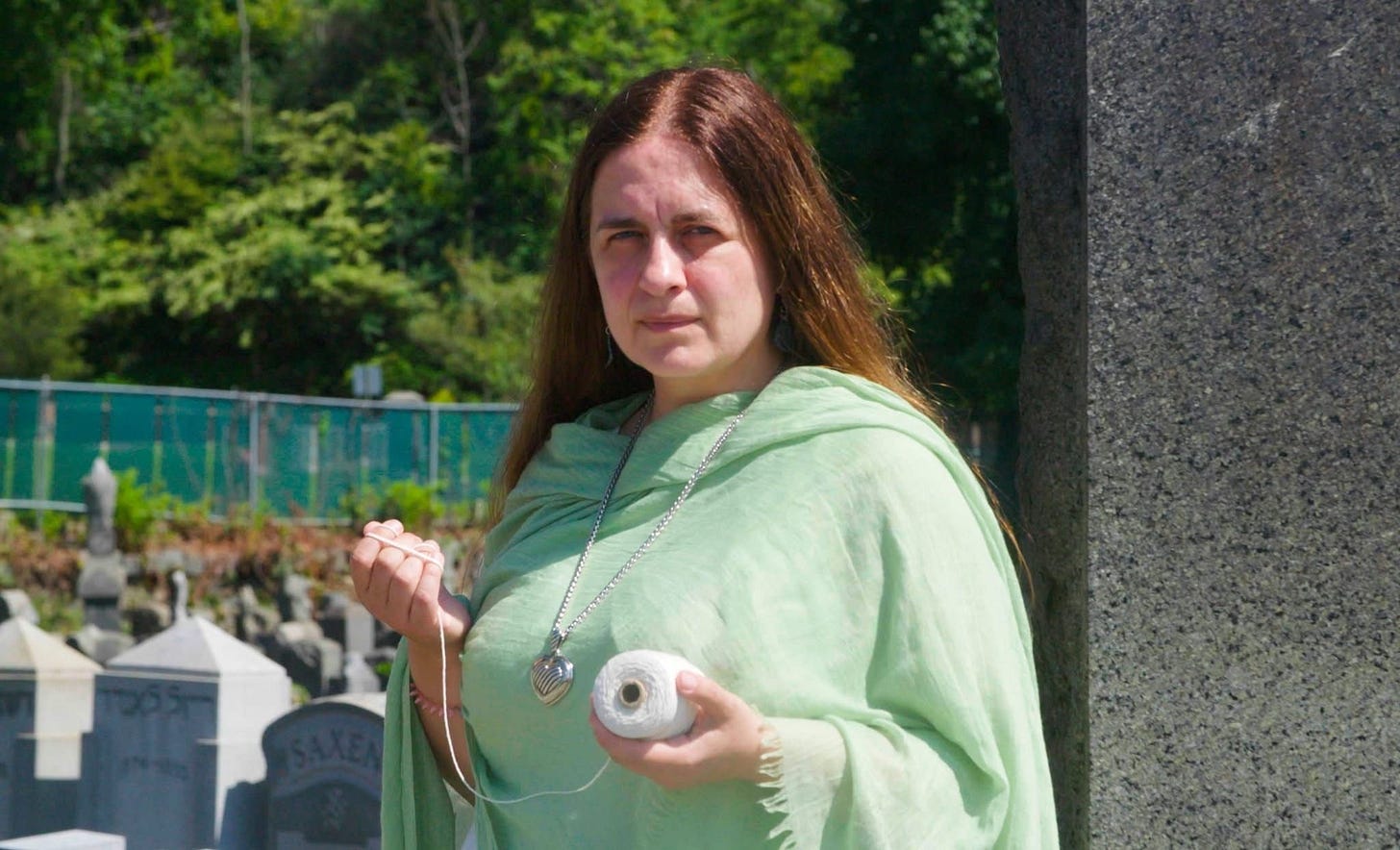
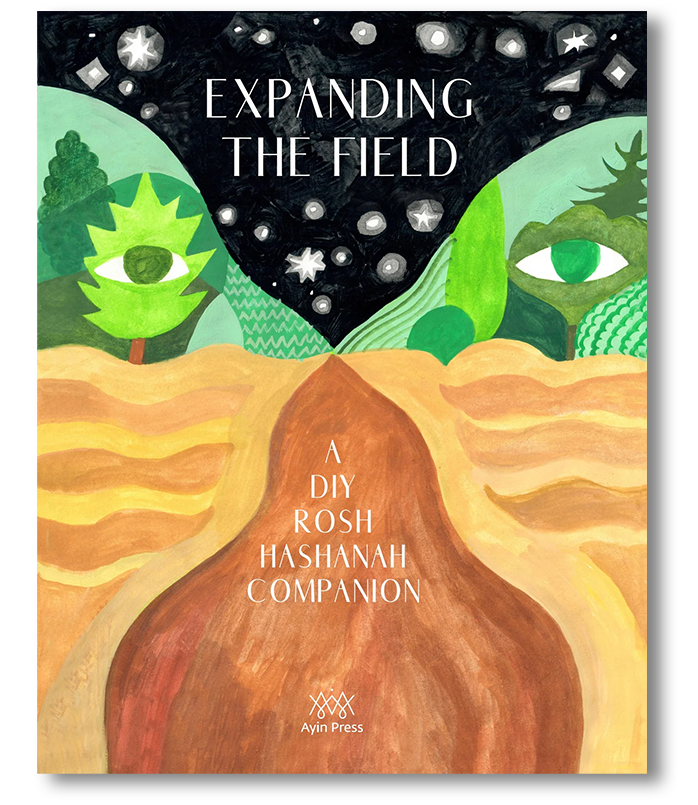
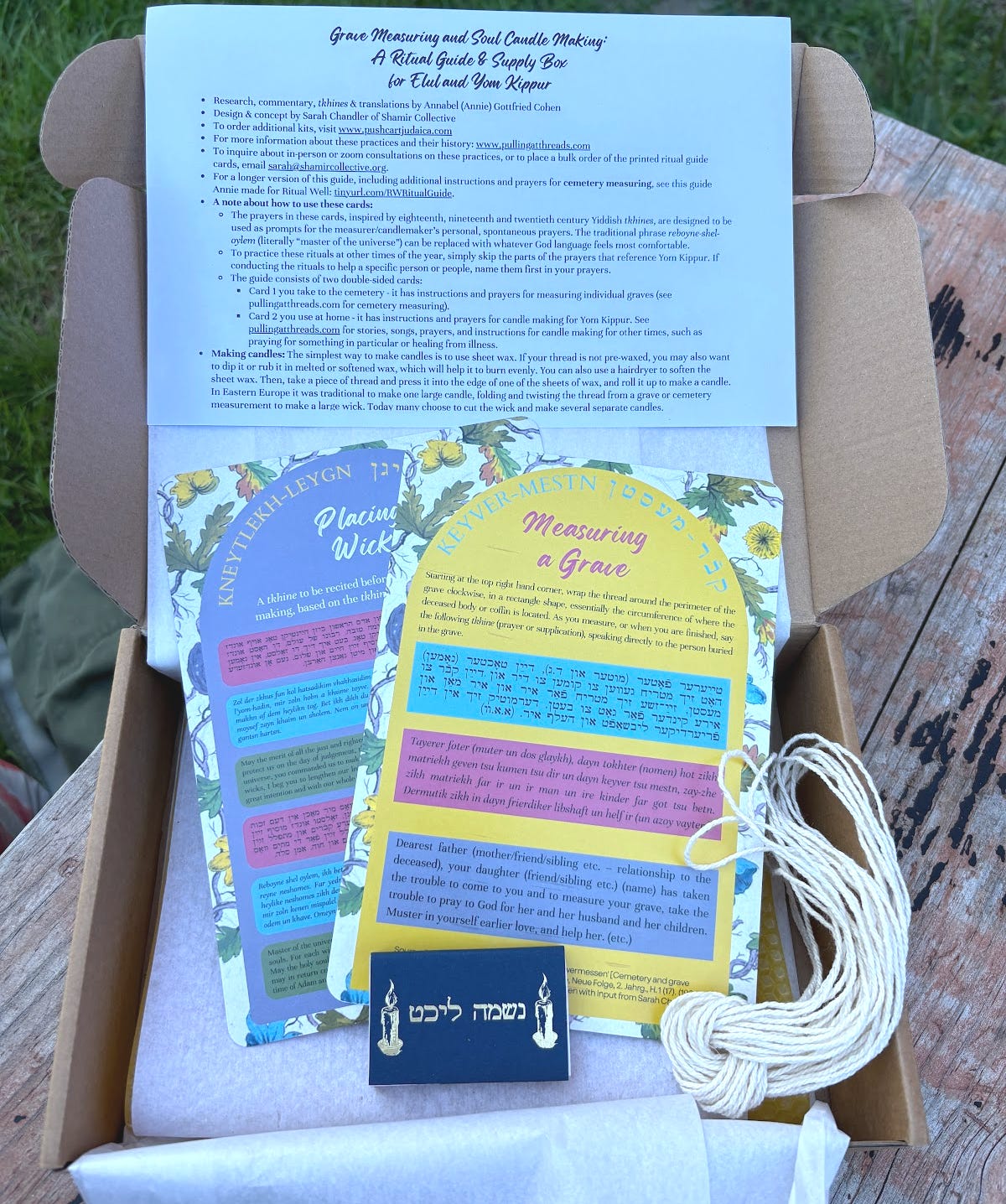
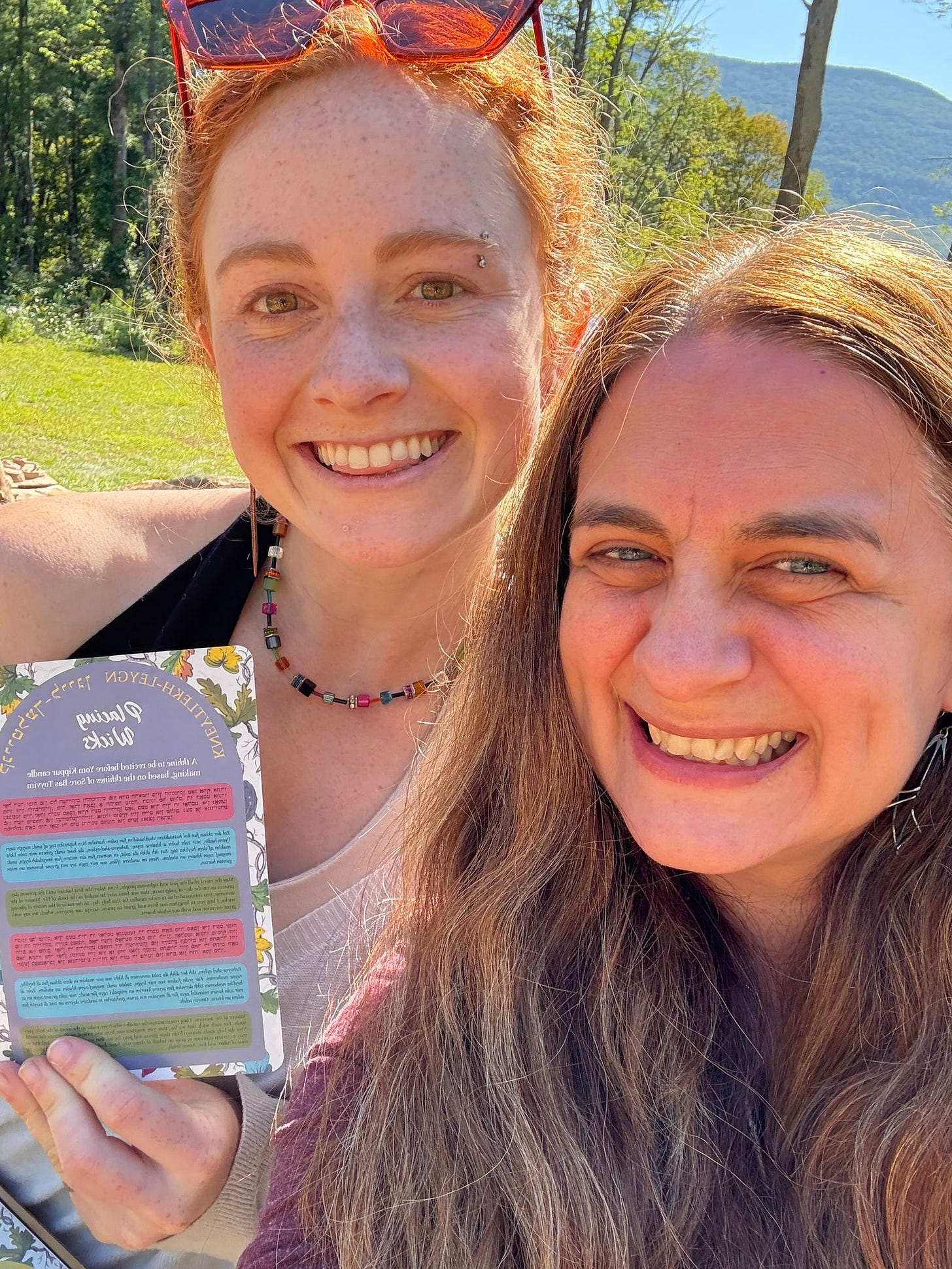

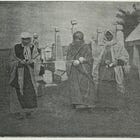

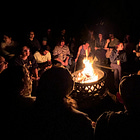
So inspiring to read about your Jewish spiritual journeys. May the journey continue!
Love the ritual of the candle wicking